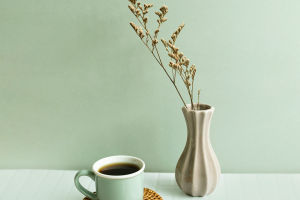Begonia flowers are renowned for their breathtaking beauty and vibrant colors. With over 1,800 species, the Begonia genus offers a kaleidoscope of captivating blooms that have enchanted gardeners and flower enthusiasts for centuries.
From their striking hues to unique leaf patterns, Begonias are truly a spectacle of nature. In this article, we delve into the world of Begonia, exploring its characteristics, cultivation, and the various types that grace gardens and indoor spaces around the globe.
Appearance and Varieties: Begonias are famous for their ornate and intricate blossoms, which vary greatly in shape and size.
The flowers can be single or double, and their petals display an array of vivid colors, including shades of red, pink, orange, yellow, and white.
Some varieties even feature bi-colored or spotted patterns, adding an extra touch of elegance to their overall allure.
Furthermore, Begonia leaves are equally stunning, boasting unique shapes, textures, and striking patterns, such as angel wings, spirals, and rex.
Cultivation and Care: Begonias are relatively easy to cultivate, making them a popular choice among gardeners of all levels of expertise.
They prefer filtered or indirect sunlight and thrive in well-draining soil with ample organic matter. Begonias are often grown in containers, hanging baskets, or as bedding plants.
With proper care, they can bloom continuously, providing a spectacular display of color throughout the growing season.
Adequate watering, balanced fertilization, and protection from extreme temperatures are essential for maintaining healthy Begonias.
Types of Begonias:
a) Tuberous Begonias: These varieties produce large, showy flowers and are often used in outdoor gardens or for hanging baskets. Their blooms can resemble roses or camellias and are available in a wide range of colors.
b) Rex Begonias: Known for their stunning foliage, Rex Begonias have intricately patterned leaves with vibrant colors, including silver, purple, pink, and green. They are commonly grown as indoor houseplants.
c) Fibrous Begonias: This group includes both upright and trailing varieties. They are favored for their profusion of small, delicate flowers and are ideal for borders, rock gardens, or hanging baskets.
d) Rhizomatous Begonias: Having thick, fleshy rhizomes and producing a variety of leaf shapes and patterns, they are often grown for their unique foliage and are well-suited to indoor cultivation.
e) Cane-like Begonias: This group includes Begonias with bamboo-like stems. They produce clusters of colorful flowers and can be trained as shrubs or grown as hanging plants.
Symbolism and Cultural Significance: Begonias hold various meanings and symbolisms across different cultures. In many Asian countries, they are associated with harmony, balance, and prosperity.
In Victorian flower language, Begonias conveyed caution, reminding the recipient to be aware and cautious in matters of the heart. Today, Begonias are often given as gifts to express admiration and appreciation to convey well wishes.
Begonia plants stand as a testament to the marvels of nature's artistry. Their vibrant blooms, intricate patterns, and diverse species make them a prized addition to any garden or indoor space.
With their relatively easy cultivation and stunning aesthetic appeal, Begonias continues to captivate the hearts of gardeners and flower enthusiasts worldwide.
Whether adorning hanging baskets, blooming in beds, or brightening up indoor spaces, the beguiling beauty of Begonia flowers never fails to leave a lasting impression.


